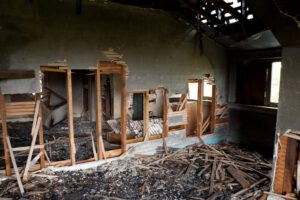Classification of Fire Damage
When it comes to fire damage, knowing the different types and what your insurance policy covers is important. In this article, you will learn about Class F fire damage, Class A fire damage, and Class B fire damage. Read on to learn about the different ways that insurance companies handle fire damage. Once you understand the different types of fire damage, you’ll be able to make a decision about your coverage.
Although modern advances in fire prevention have resulted in better materials that resist flame, fire is still a major threat. Each year, hundreds of thousands of homes in the States are damaged by fire. Because fire damage varies so widely, it’s important to know the different types of fire damage and how each one may affect your home or your health.
Fire damage in Class F homes is especially dangerous. This category is characterized by cooking oils and other flammable materials. This type of fire is more difficult to contain than other types of fire. As a result, you should hire a remodeling contractor who will assess the risks of your property. Ultimately, the contractor will help you decide which materials are most fire-resistant.
Another type of fire damage in homes is Class D fire damage. These fires can spread quickly from cooking oil and other flammable liquids. They can also spread due to electrical issues or faulty wiring.
When a fire breaks out in your home, you need to know what type of damage it will cause. Class A fire damage is caused by flammable solids like wood and rubber, as well as different types of plastics. Class B fire damage is caused by flammable liquids, like gasoline and paint. However, this category does not include cooking oils, which are not flammable.
The second major type of fire damage is smoke, which discolors surfaces and leaves behind strong odors. Then there is the damage caused by other substances used to put out the fire, like water and chemicals. The flammable solids and liquids in Class A fire damage are generally those found in kitchens, and they tend to spread quickly.
Fire damage from fires can occur due to multiple sources in a home, so it’s essential to have a fire insurance policy. Even a small fire can cause a significant amount of damage if it isn’t put out quickly enough. It’s important for you to understand the different types of fire damage so you know what type of restoration service you’ll need to make your home safe again.
The best method to combat class B fire damage is to put out the fire by smothering the flames. Sodium bicarbonate and potassium carbonate are effective smothering agents for kitchen stovetop fires. Foam and CO2 fire extinguishers are also effective against this type of fire. They work by slowing the chemical reaction that spreads the flames.
Class B fire damage occurs when flammable liquids or solids become liquid. Examples of flammable liquids include oil, gasoline, and paint. Cooking fats, however, are excluded from this category. In addition to liquids, Class B fire damage can occur when combustible gases, such as butane and hydrogen, burn. Some metals, such as potassium, can also burn in fire.
Class E fire damage involves electrical elements as well as factors from Class A and B. These fires are hotter and more destructive than Class B. Class F fires are typically caused by cooking oils and fats, making them very dangerous. These types of fires are typically the result of an unattended frying pan.
Class B fire damage is the result of a flammable liquid or gas that has spread throughout the home. These kinds of fires are most common in industrial settings, but can also happen in residential settings. The best method to fight Class B fire is to completely smother the flames and prevent further damage to your property. Water is not effective in fighting this type of fire, so dry chemical agents are typically used.
Fire damage of all kinds can be devastating to a home, especially if it is not quickly put out. As a result, it is important to know the various classes of fire damage so you can prepare yourself for the worst. Kingdom Restoration Inc., a residential construction company, has shared some important information about fire damage.
